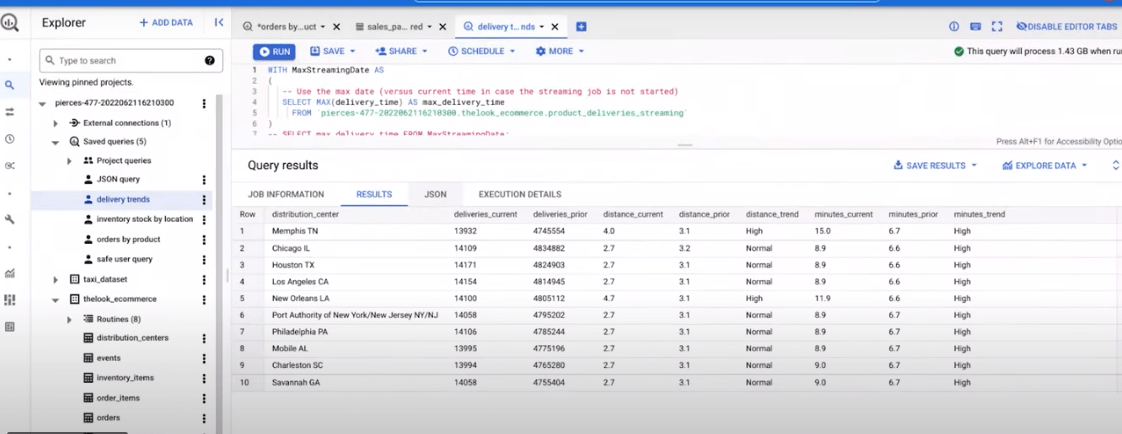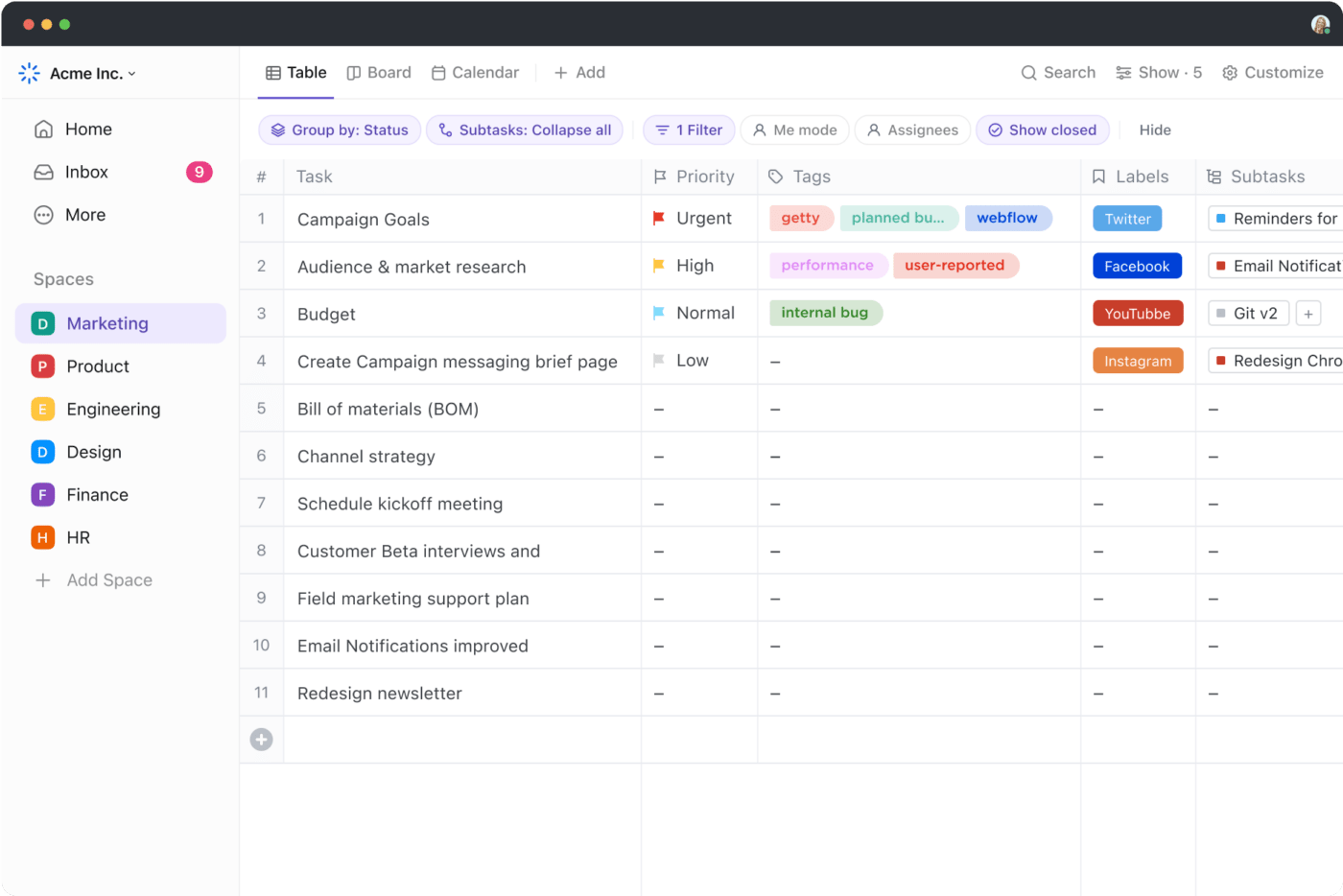10 Fantastic Snowflake Alternatives for Streamlined Data Management

Sorry, there were no results found for “”
Sorry, there were no results found for “”
Sorry, there were no results found for “”
Snowflake is a popular cloud warehouse that helps you access, store, manage, and share your data while guaranteeing maximum security. The platform is renowned for a reason—it offers excellent automation options, supports structured, semi-structured, and unstructured data, fuels collaboration, and integrates with various business intelligence tools.
Although its name may suggest otherwise, Snowflake is a robust tool that can handle vast amounts of data and deliver lightning-fast performance at all times. ❄️
Despite its incredible options, Snowflake isn’t a perfect match for everyone. Some people may want more control over their costs, a simpler user interface, or the possibility of offline use.
We did the heavy lifting for you and concocted a list of the top 10 Snowflake alternatives that might align better with your needs. We’ll cover their features in-depth and highlight some drawbacks to help you find the ideal data solution for your business.
As you can find a plethora of alternatives to Snowflake, separating the wheat from the chaff can be challenging. If you want to be confident you’re making the right decision, look for a platform with the following characteristics:
After analyzing dozens of alternatives to Snowflake, we’ve come up with a list of the top 10 platforms that offer the best functionality and security. Check these data platform alternatives out and find the one that suits your company’s data needs. ?

If you want to store and analyze huge amounts of data without hiccups and get detailed insights in the blink of an eye, AWS Redshift is the way to go! Amazon’s cloud data warehousing tool is packed with state-of-the-art features that can handle even the most complex datasets and give you integrated insights. ?
AWS Redshift has federated query capability—reach into your relational databases and query live data to better understand the performance of your business operations with zero data movement.
Another reason you may consider this tool is Redshift machine learning (ML). It allows you to use SQL statements to train Amazon SageMaker models based on your data in AWS Redshift and make financial predictions, detect customer churn, and measure risks.

Vertica is a robust tool that can analyze any type of data and help you make informed decisions on improving processes.
This unified data analysis platform uses powerful technology to interpret data from different sources, allowing you to keep the process centralized.
One of the reasons Vertica offers such high performance is columnar storage. Data is organized in columns for improved query performance. As Vertica reads only the columns necessary to answer the query, it offers top-notch speed and efficiency.
With built-in AI and machine learning capabilities, you can automate and monitor the operation of architectures and personalize your experience to the fullest. ?

Want a warehouse that can analyze all kinds of data in real time without worrying about server management? Try Google BigQuery, a serverless data warehouse that hits the sweet spot between ease of use, fantastic performance, and robust options.
The superstar feature of this warehouse is BigQuery Studio—a unified interface that allows data practitioners with varying coding skills to simplify workflows. This powerful option lets you use simple SQL to access Vortex AI (Google’s machine learning platform) to streamline data-related tasks and avoid using specialized models.
Google BigQuery also features Duet AI, an AI-based assistant that can lend a helping hand when writing in Python and SQL, thus lowering the risk of mistakes and skyrocketing your efficiency! ?

If you want a free, open-source alternative to Snowflake, you’ve found it! PostgreSQL is a robust object-relational database platform with features that can help you store and scale even the most complex data.
It’s no surprise the tool is so popular in the data community—it works on all operating systems, is ACID-compliant, and can be extended with fantastic add-ons.
With PostgreSQL, you have complete freedom to create an environment that aligns with your needs. Define your data types, create custom functions, and write code using different languages without recompiling the database, thus saving time. ?

Analyze data across data lakes, warehouses, operational databases, and big data systems and gain valuable insights with Azure Synapse Analytics, an enterprise analytics service! ?
The platform combines SQL and Apache Spark technologies with Azure Data Explorer to deliver the best results and let you dig deep into heaps of data.
With Azure Synapse Analytics, you can choose which language to use to query both relational and non-relational data, giving you the utmost flexibility.
The platform is all about security—use column-level encryption and dynamic data masking to ensure your data is 100% safe.

Sync, store, and access your data with Panoply, a first-class cloud-based platform.
Panoply is best known for its data integration capabilities. The platform features 200+ no-code data connectors to link to databases, APIs, and more and collect data from multiple sources. This allows you to forget about your disparate data woes and keep everything centralized. The connectors can help you streamline e-commerce, marketing, payment processing, and CRM workflows.
With a Workbench for SQL-based data exploration, built-in analytics options, and plug-and-play compatibility with business intelligence tools, Panoply can be your go-to data solution.
*All listed prices refer to the yearly billing model

Databricks is a data lakehouse—it combines the best of data warehouses and data lakes and delivers a solution that helps you reduce costs and remove silos. ?
This platform is an excellent solution for those looking to unify their data across all clouds. It’s built on open-source and open standards and is underpinned by Delta Lake, Apache Spark, Redash, Delta Sharing, and MLFlow.
Simplify your data-related processes and create a centralized solution with a single toolset for SQL and Python, IDEs and notebooks, batch and streaming, and popular cloud providers.
Databricks is 100% scalable—it can handle the data needs of small businesses and large enterprises equally well.

Snowflake is the perfect match for your business, but the only reason you’re considering an alternative is the lack of cost visibility? Thanks to CloudZero Snowflake Cost Intelligence, you can keep using the platform and get granular insight into your costs to prevent cost overruns and make informed decisions.
This solution grants you access to insights from both AWS and Snowflake. You can zoom in on costs per project, team, feature, or goods sold to get a close-up of your expenses.
CloudZero Snowflake Cost Intelligence has real-time cost anomaly detection. It will notify you whenever you exceed the budget to prevent extra costs.

Cloudera is a hybrid data platform that helps you harness the power of both public and private clouds. It’s an excellent solution for those who want centralized administration and crystal-clear visibility into their data processes.
The platform gives you unmatched freedom—choose any cloud, data, and analytics, and enjoy faster time-to-value and optimized performance.
Cloudera is there for you during every phase of the data lifecycle, from data distribution to data science and machine learning.
The platform’s biggest appeal is its portable data analytics features. As the business conditions change, you can move your data and applications between clouds or back on-premises to ensure consistent management without complicated refactoring.

Say goodbye to complex data problems with Teradata Vantage—a multi-cloud data analytics platform designed for enterprises. ?
The platform’s stand-out feature is Analytics Database. Besides running the standard SQL analysis, this option lets you use path and pattern analysis, 4D analysis, and scoring. It can also execute query optimization functions like Optimizer and Workload Management.
With Teradata Vantage, you can access various business intelligence visualization and analytics tools, notebooks, and IDEs, maximizing the platform’s functionality and performance.
One of the platform’s most significant advantages is ease of use. Although it offers robust data options, Teradata Vantage is highly intuitive, and you don’t need a technical background or extensive experience to reap its benefits.
The Snowflake alternatives on our list offer robust options for handling and storing all kinds of data. Still, they can often feel overwhelming and too complicated for users managing only one data type. Let’s say you’re building a customer database—you probably don’t need advanced options for querying, SQL analysis, and coding.
But you still want to use a reliable platform with plenty of customization, organization, and management options. In that case, you can benefit from ClickUp. ?
Let’s see how ClickUp can help you create and manage a customer database and whether it can serve as a worthy alternative to Snowflake.

ClickUp is an all-in-one productivity platform with robust options for task and project management, organization, collaboration, and visualization. As it’s feature-packed, ClickUp can serve various purposes and be the perfect home to your customer databases, whether your company’s focused on selling products or services.
The platform has a set of options dedicated to customer management named ClickUp CRM. You can use them to create databases, visualize pipelines, and manage client relationships and info to draw conclusions and make informed decisions.

One of the options you’ll love is ClickUp Views. The platform has 10+ views that allow you to look at your data from various perspectives. We’d like to point out the Table view, where you can create new tasks to store every client’s data and centralize all info for easy access and navigation.
Use ClickUp Custom Fields to provide more details about your clients—you might include their contact info, add the salesperson(s) in charge of each account, and determine their priority.
Custom Fields let you connect entries (your customers) to documents and other tasks, thus creating a centralized database with all customer info. Link to offers, contracts, past purchases, predicted needs, and everything else that can help you deliver exceptional customer service. ✨

Now that we mention documents, we can’t forget ClickUp Docs. This feature lets you create, manage, share, and work on all documents that can be important for your databases. Use it to generate offers, outline CRM strategies and plans, invoices, and prepare onboarding documentation.
ClickUp is an AI-powered CRM tool thanks to ClickUp AI, a robust AI writing assistant. It helps you create all types of documents much faster, streamline repetitive tasks, and foster frictionless communication with your clients.

ClickUp may not be a data cloud platform, but it can integrate with one (or more), allowing you to combine their powers and streamline your work.
When it comes to ClickUp Integrations, your options are almost endless. You have over 1,000 apps and platforms to choose from! If you can’t find the app you want to link with in the library, use ClickUp API or Zapier integration to build custom integrations and reach the functionality levels you never thought were possible. ?
The listed alternatives to Snowflake can help you create, manage, store, and analyze vast amounts of data to gain valuable insights that drive your company forward.
On the other hand, if you’re also looking for an all-in-one platform to manage tasks, projects, client data, and your team without hiccups, ClickUp is your best bet. ?
Sign up for ClickUp today and explore the many ways in which it can optimize your workflows.
© 2026 ClickUp